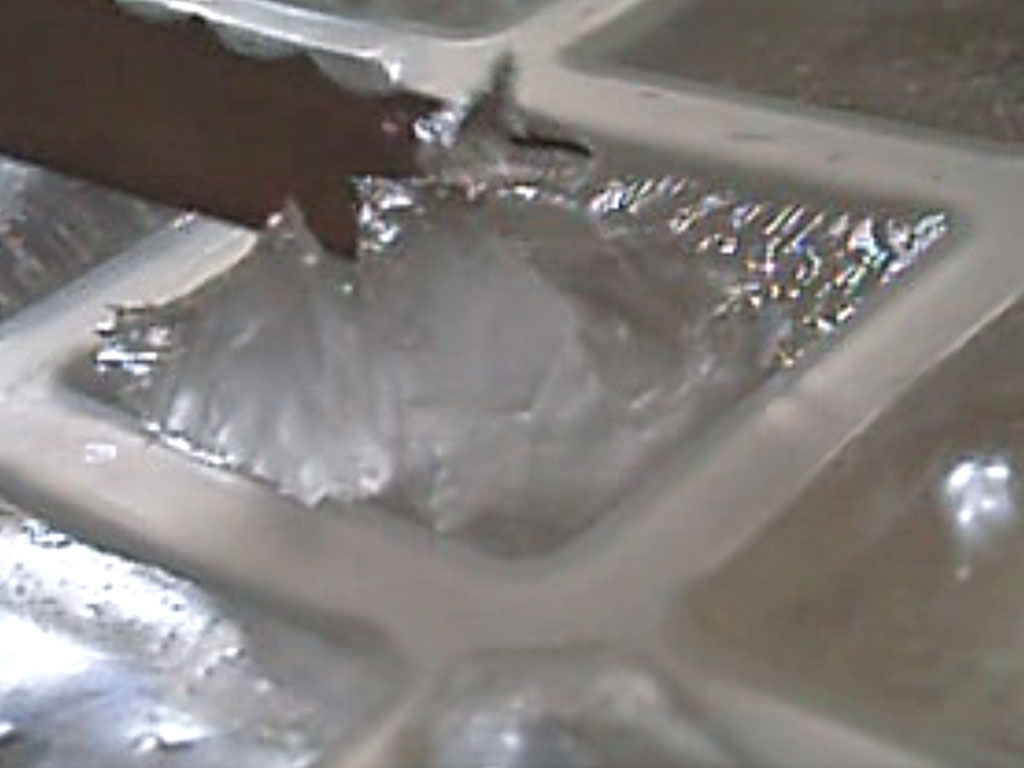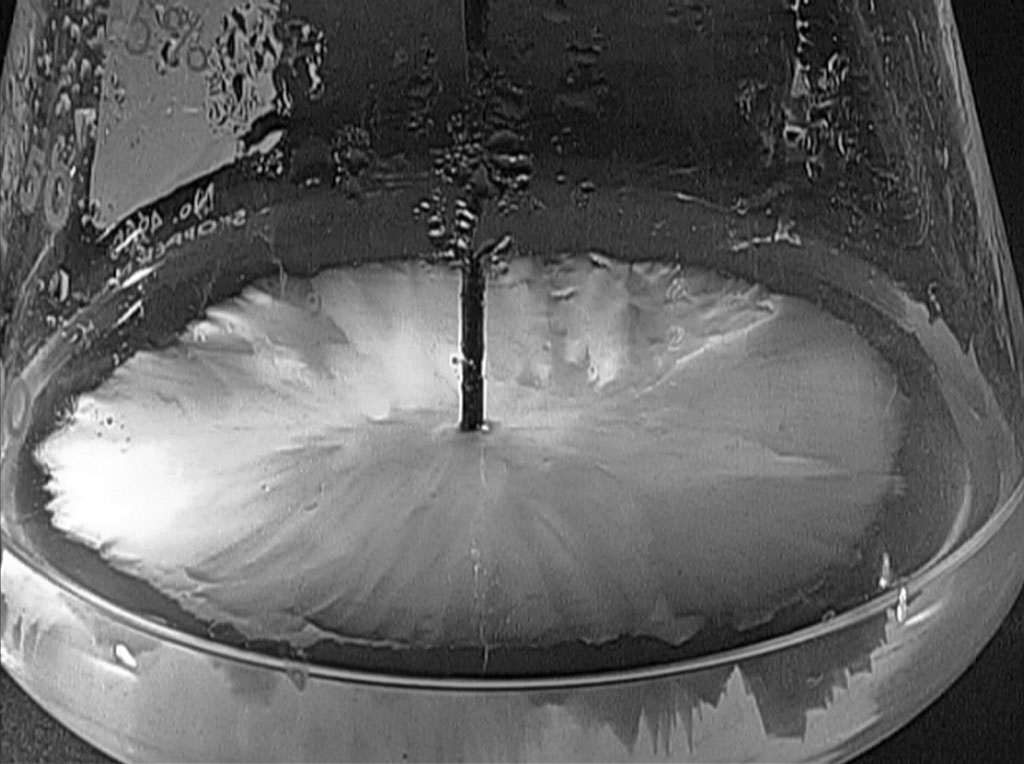2.2 Nucleation
Petrologic change commonly involves the growth of a new mineral or phase. Nucleation is the process whereby a critical number of atoms (a nucleus) is assembled in the appropriate form (e.g. crystal structure, gas, liquid), allowing a new crystal or phase to grow by adding to that nucleus. Many readers will be familiar with everyday life chemical reactions involving water, including some with sugar or salt, that do not always occur at (or close to) the predicted temperature due to low rates of nucleation, particularly at low temperatures. For example, "supercooling" of water below the equilibrium freezing temperature (0°C) is a popular laboratory demonstration because of the rapid growth of ice crystals once ice nucleation occurs. You can see this in the video of Figure 2.03. Click on Figure 2.03 to see the video and links to other videos of supercooled water. A similar rapid growth of crystals in a supercooled liquid, in this case bischofite (MgCl2•6H2O) crystals in a MgCl2-H2O liquid, is shown in the video of Figure 2.04. In both examples, crystal growth, and therefore chemical reaction, is delayed by the difficulty of nucleation of the product crystals.
In many cases, nucleation of a product phase is inhibited because of the surface/interfacial energy of the new phase produced by unsatisfied bonds and disorder at the boundary between phases. Interfacial energy can be an important factor if the new phase is tiny, with a large surface area relative to its volume. Reactions proceed spontaneously only if there is a decrease of Gibbs energy as the reaction progresses. Initial assembly of atoms into a product phase with a large surface to volume ratio may lead to an increase in Gibbs energy, preventing successful nucleation. A nucleus will grow only if a nucleus reaches a critical size, large enough so that the volume-based Gibbs energy decrease exceeds the surface/interfacial Gibbs energy increase during growth. This can be accomplished by reaction overstepping, by nucleation on other surfaces (heterogeneous nucleation) as in the bischofite example (Fig. 2.04), by perturbations such as vibrating the supercooled water, or by waiting a long time for a stochasitic event that assembles a large enough nucleus.
If you would like to explore quantitatively the details of interfacial energy effects on the Gibbs energy of nucleation, click here: .
Alternatively, open the next page to nucleate some bubbles.

